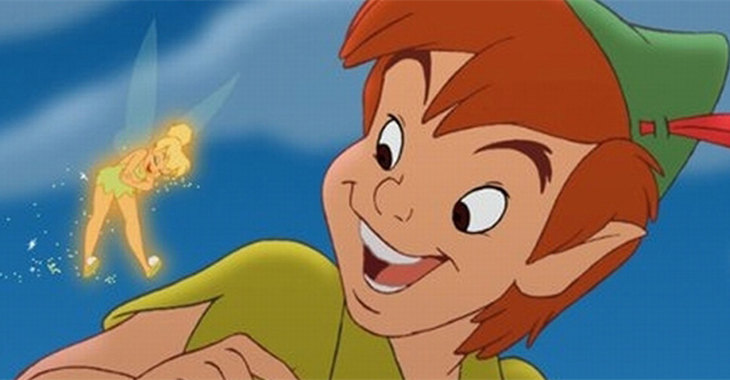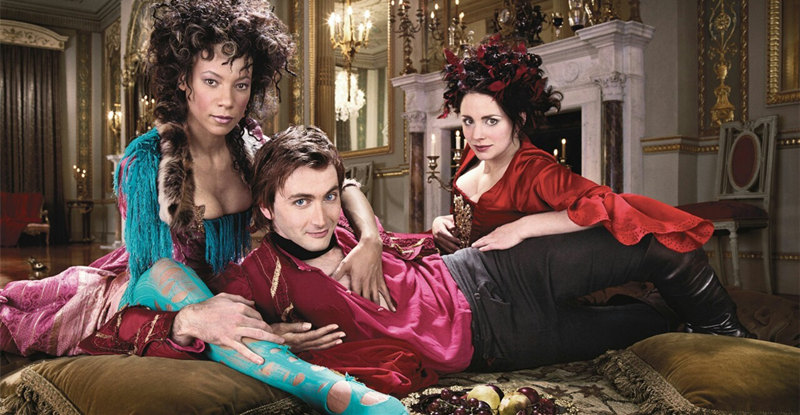Note: In this joint review, John J. Puccio and Justin Cleveland provided their thoughts on the film while William D. Lee reviewed the video, audio, and extras.
The Film According to John:
Orson Welles once remarked that no great film was ever made in color. Hyperbole or no, “To Kill a Mockingbird” surely makes Welles’s case.
Although the movie does not quite measure up to the rich tapestry of Harper Lee’s best-selling, Pulitzer Prize-winning 1960 novel, director Robert Mulligan’s “Mockingbird” (1962) is still one of Hollywood’s most successful screen adaptations of a literary work. By turns powerful, humorous, touching, and provocative, the film comes as a welcome addition to any film lover’s library.
The plot traces the events of a year or so in the life of a widower, lawyer Atticus Finch, raising two children in a small Alabama town in the early 1930’s. We see the events through the eyes of his young daughter, Scout, who through the course of the film’s action learns much about tolerance, open-mindedness, courtesy, and respect, thanks largely to the example of her father.
The central episode in the narrative is about race relations–Atticus defends a black man accused of raping a white girl–yet the story is never preachy; and the lessons one learns about human dignity are more far-reaching than the movie’s trappings of racial prejudice and bigotry might suggest. Judging by people’s conduct toward one another on today’s talk shows, hate radio, and Internet forums, the movie’s themes are those from which we might all benefit.
Gregory Peck won an Oscar in 1962 for his portrayal of a noble attorney bucking the intolerance of an entire community. Peck, often criticized for being a somewhat wooden leading man, was never better than in this film, lending a quiet honor and a steadfast resolution to the proceedings. The two children, played by newcomers Mary Badham and Phillip Alford, not only look like we picture the kids in the book, but they are most natural and moving in their roles.
Equally impressive are Brock Peters as the gentle, innocent black man on trial; James Anderson as the vile redneck, Bob Ewell; and Robert Duvall in his first screen appearance as the misunderstood recluse, Arthur “Boo” Radley. Everyone connected with the picture–director Mulligan, producer Alan Pakula, screenwriter Horton Foote (who also won an Oscar for his screenplay), music composer Elmer Bernstein, and others–deserve recognition for their impeccably harmonious efforts.
For me, one of the most poignant scenes in all of cinema is when young Scout meets the shy Arthur Radley for the first (and only) time and says, “Hey, Boo.” The words and the shot–Scout fearful with wonder and excitement, Arthur pressed against a wall, hiding in the shadows–couldn’t be simpler. Yet I’ve watched (and read) the scene probably a hundred times over, and it never fails to move me anew each and every time. This is great filmmaking, and the movie deserves a place among the best movies ever made.
The Film According to Justin:
“To Kill a Mockingbird” is a picture of an era gone by. Reflective of the leisurely pace of the Depression-era South the film takes its time in developing a portrait of the lives of a pair of kids who are oblivious to the pitfalls of the time, including racism, bigotry, and painfully-poor conditions. Rather than tell a distinct A-to-B story, the film explores the era from the perspective of the children and exposes the true nature of the underpinnings of hatred in our society.
There is always a worry when a classic novel is being adapted to the screen, that it won’t be able to live up to the bigger-than-life reputation it earned over time. Fortunately the cinematic interpretation of “To Kill a Mockingbird” not only lives up to its source, in many ways it surpasses it by using a dynamic and veritable set of actors who create a wonderful group of characters that feel completely real.
The innocence of Jem (Phillip Alford) and Scout (Mary Badham) and their interpretation of the world they inhabit is the primary plot of the first half of the movie. The kids’ adventures with the visiting neighbor boy Dill (John Megna) are fun slices of history. They explore the sleepy little town they inhabit, playing with an old tire, and telling tales of the spook who lives in the neighbor’s basement. These scenes set a great tone for our innocent narrators and feel absolutely right and proper. They aren’t playing children; they are children, playing.
The interplay between the children and their single, widdower father, Atticus Finch (Gregory Peck), is marvelous. It is at once obvious that Atticus loves his children and isn’t exactly sure what to do with them. He lets them experience life, giving them sage words of guidance to help them on their journey to becoming well-rounded individuals. He may be strict, but he’s never harsh. The dynamic the three have is phenomenal, giving the audience a clear picture of their relationship. Though it would be a difficult scenario, I doubt there are many people who would not wish to inhabit their Macom household.
The main focus of the second half of the film revolves the trial of a black man for a rape he didn’t commit. Atticus is tapped to defend the accused, causing a deep schism to develop between him and the rest of the town who see Tom Robinson only as a nigger who had no business being around any white woman. The end of the trial is unfortunately inevitable, but justice is found in the end. If you were to tell me that there would be an hour-long scene set in a courtroom for a race-based rape trial that would show the defendant being railroaded, I would say that I earnestly had little interest in watching it. The movie doesn’t get preachy about the trail and instead shows just how much of a sham the legal system could be to people of color during this time in history. It becomes a sequence that flows and sets the bar (so to speak) for every courtroom scene to follow in film.
Every accolade given this film is deserved, as is every word of praise. I can think of few movies that deserve the distinction of perfection; but “To Kill a Mockingbird” is just that. I feared writing this review because I didn’t want to observe the movie critically because I love it so much. I didn’t want to nitpick it or tear it down. Fortunately it stands up wonderfully to critical examination and repeated viewings. A quiet stillness permeates this movie that would be hard to create today. Just another reason to celebrate a nearly perfect film.
VIDEO:
The video is presented in 1080p with an aspect ratio of 1.85:1. Universal has previously released the film on DVD in a Collector’s Edition and a 2-disc Legacy Series. I’ve only seen the latter version and this new high definition transfer blows it away. The picture quality is really gorgeous and the restoration has brought out a lot of fine details. Thankfully, the restoration hasn’t scrubbed away the grain that lends an added texture to the movie.
AUDIO:
The audio is presented in DTS-HD Master Audio 5.1 and a DTS-HD 2.0 mono track. The sound is fairly straight forward and I’m happy Universal didn’t try anything fancy to modernize it. The iconic score by Elmer Bernstein feels richer and the dialogue is crisp and clear.
EXTRAS:
This new version of “To Kill a Mockingbird” comes loaded with extras both new and old. Ported over from the original Collector’s Edition DVD is an audio commentary with director Robert Mulligan and producer Alan Pakula. Discussed at length are the locations and sets, Harper Lee, and working with the child actors.
Also from the Collector’s Edition is Fearful Symmetry(1:30:13), a full-length documentary about the making of the film that goes in depth about life in the South, Harper Lee and the people from her life that inspired the movie.
Even more extras have been ported over from the previous 2-disc Legacy Series.
A Conversation with Gregory Peck (1:37:37) is another documentary that gives us a peek into Peck’s life followed by an in-depth Q&A session where Peck discusses his career.
Academy Award – Best Actor Acceptance Speech(1:31) is Peck’s short speech from the Oscars where he was presented the award from Sophia Loren.
AFI Lifetime Achievement Speech (10:01) is another speech Peck gave when he was given the award in 1989.
Excerpt from Tribute to Gregory Peck (10:09) is a speech given by Peck’s daughter, Cecilia, during a night honoring her father.
Scout Remembers (12:01) features an adult Mary Badham’s recollections about working on the movie.
New to this release is the U-Control picture-in-picture option featuring narration by Gregory Peck’s children, Cecilia and Anthony, as well as interviews from the cast and crew culled from Fearful Symmetry.
100 Years of Universal: Restoring the Classics (9:13) is a promo about the studio’s restoration work on many of their classics including “To Kill a Mockingbird,” “Jaws,” and “The Birds.”
You’ll also get the film’s theatrical trailer along with DVD and Digital Copy versions of the movie.
We’re not done yet. Universal has released the 50th Anniversary Blu-Ray in standard packaging as well as a Collector’s Series version in a handsome digibook package. Bound into the packaging is a scrapbook with an introduction by Peck’s wife, Veronique, production photos, script notes, and a poster gallery.
FILM VALUE:
In 2003, AFI did a list of the top 100 movie heroes with the number one slot going to Gregory Peck as Atticus Finch, who beat out James Bond, Superman, and Indiana Jones. Peck had an amazing career starring in films like “Roman Holiday,” “Cape Fear,” and “Spellbound,” but Atticus Finch will always be his signature role. There are numerous reasons why “To Kill a Mockingbird” is considered an all-time classic and Gregory Peck’s performance is one of them. If you haven’t seen this film, now is the time as Universal has done a spectacular job. The Blu-Ray is a must-own for any serious collection.


